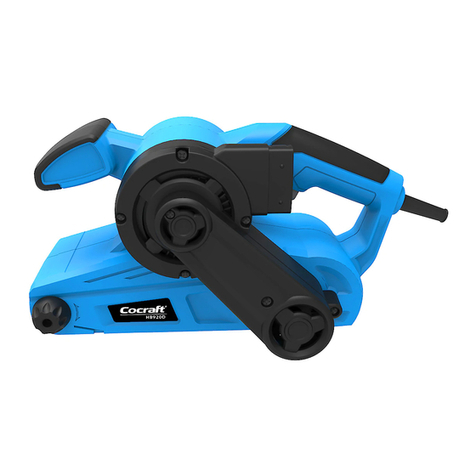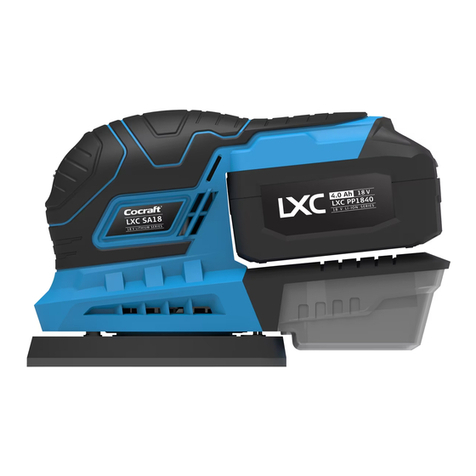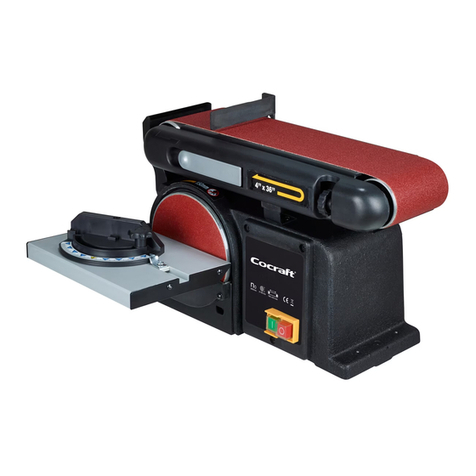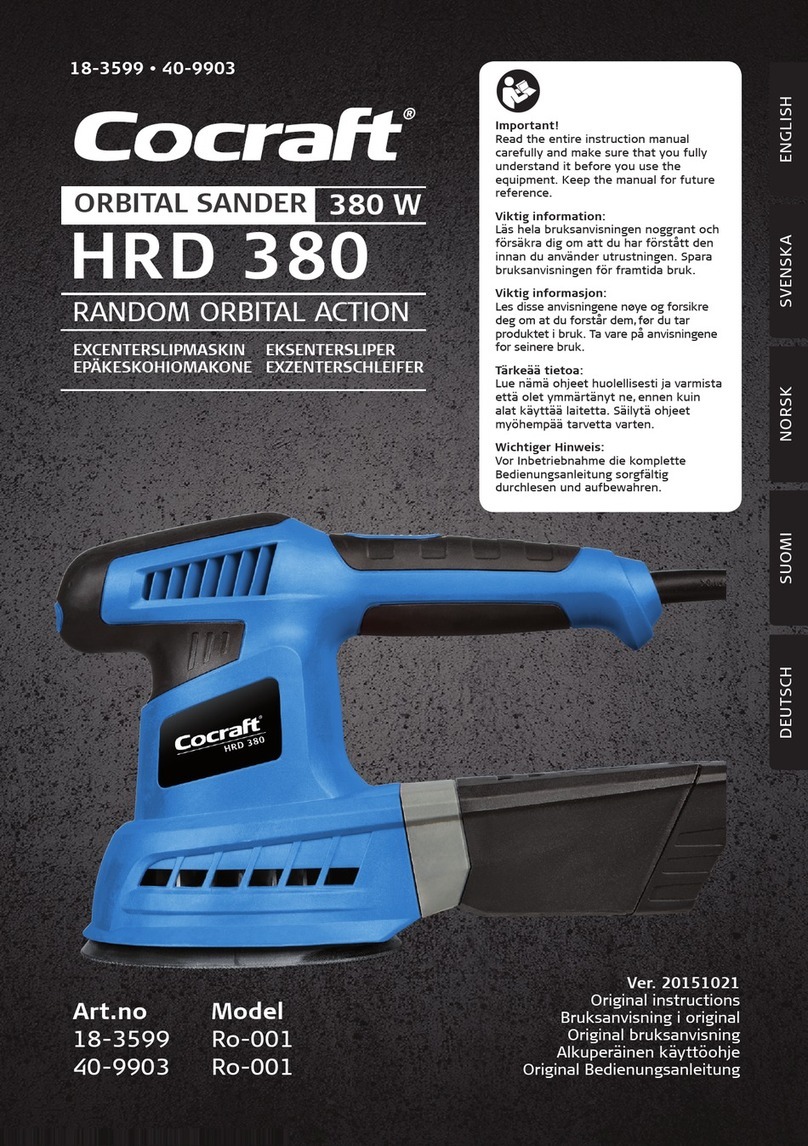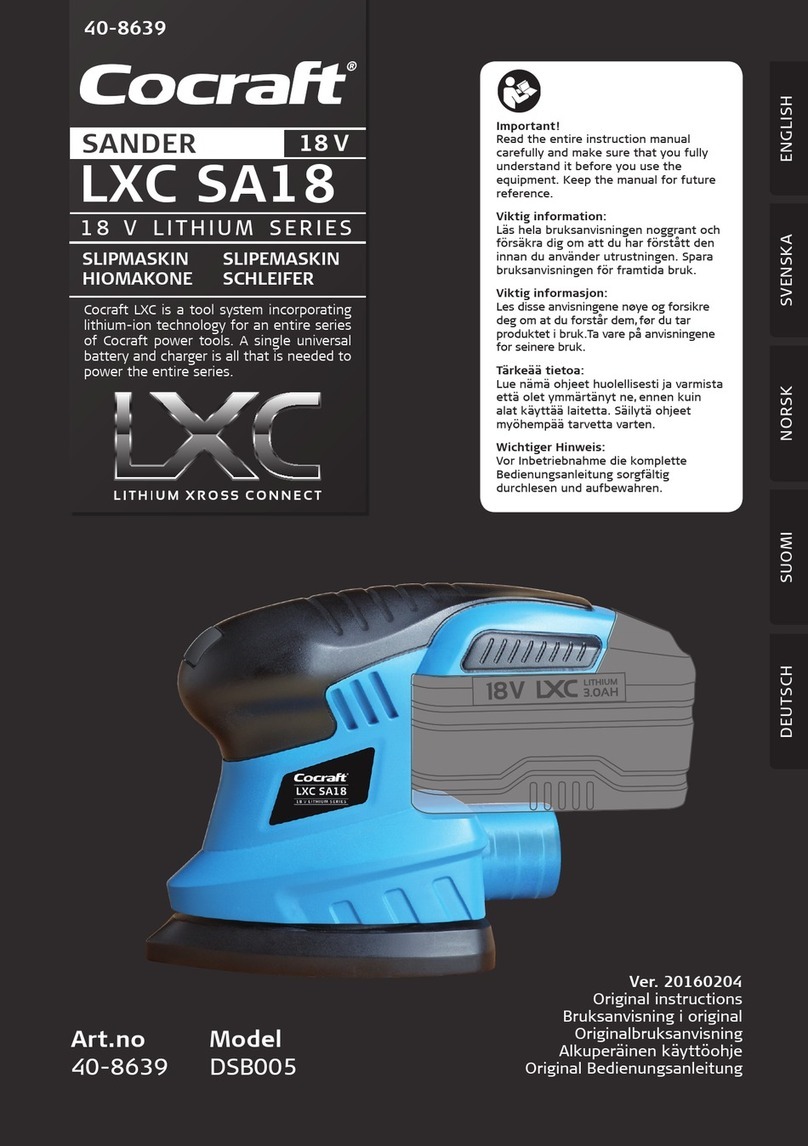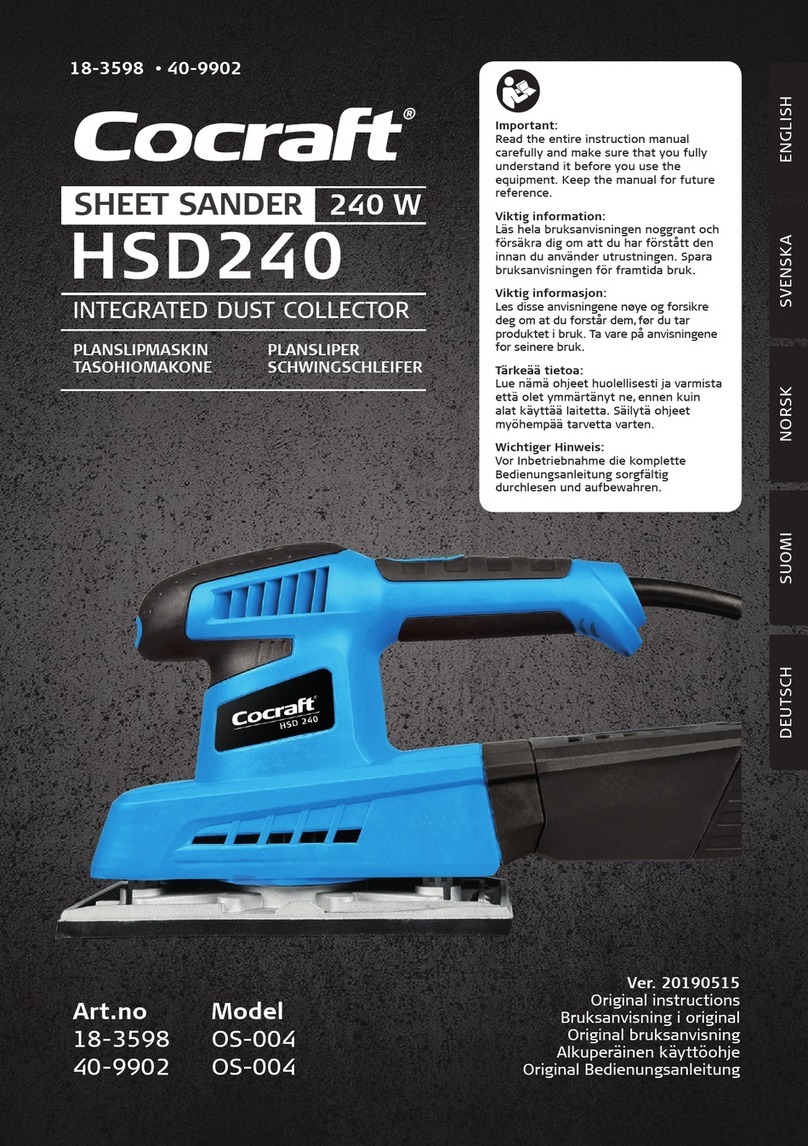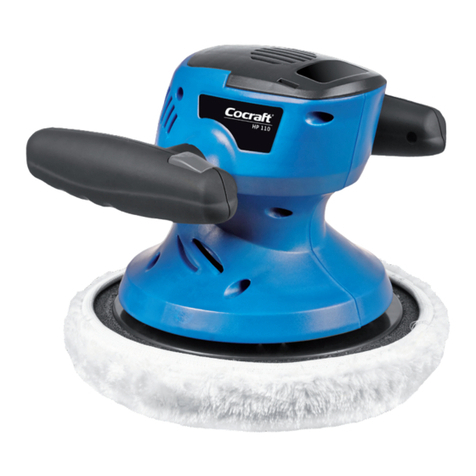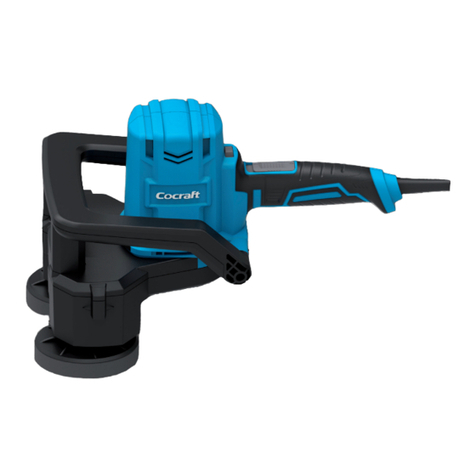
ENGLISH
6
Specic safety precautions for polishing
• Polishing bonnets with drawstrings are not recommended, but if you are
usingone: Donot allow thepolishing bonnet or its drawstring to hang loose when
operating thepolisher. Tuckin or trim off any looseends. Looseand spinning
attachment strings can entangle your fingers or snag on theworkpiece.
• This angle polisher is only intended for dry polishing.
• Only use therecommended parts and/or accessories.
• Theangle polisher must not be used by persons under theage of 16years.
• Theangle polisher must not be used on materials containing asbestos.
a) This power tool is solely intended for thepurpose of polishing. Readall
safety warnings, instructions, illustrations, and specifications provided with
thistool. Failure to adhere to all of thefollowing instructions can result in electric
shock, fire and/or serious injury.
b) Operations such as grinding, sanding, wire brushing or cutting-off are not
recommended to be performed with this powertool. Theuse of this power
tool to perform tasks for which thetool was not intended, can lead to danger and
personal injury.
c) Never use accessories which are not designed for use with this type of tool
and which are not recommended by themanufacturer. Evenif theaccessory can
be attached to your power tool, there is no guarantee that it can be used safely.
d) Therated speed of theaccessory must at least correspond to themaximum
rated speed of thepowertool. Accessories which rotate faster than their rated
speed can break and shatter.
e) Theouter diameter and thickness of theaccessory must be within
themarked capacity of your electric handtool. Ifanaccessory is thewrong
size, it will not fit theguard and will not be able to be controlled properly.
f) Do not use adefective accessory. Inspect theaccessory and make sure there are
no splits or cracks in thegrinding wheels; cracks or wear and tear on thebacking
plates, loose or torn bristles on thesteel brush wheels. Ifyou drop your power
tool or accessory, check for damage. Iftheaccessory is damaged, use anew/
undamaged accessory. Afterinspecting thetool and attaching anaccessory, keep
yourself and others outside of thepower tool’s danger zone and let it run at full
speed for one minute. Damaged accessories will normally break during this test period.
g) Wear personal protective equipment. Depending on how you use
themachine; use avisor/face protection or safety glasses. Ifnecessary use
amask, ear protection, gloves, and apron/work clothing to protect you from
small shards of metal or splinters from thework object. Theeye protection
you use must be able to protect against flying debris produced in different working
positions. Thebreathing protection should be able to filter any particles produced by
thework. Prolonged exposure to high levels of noise can result in hearing damage.
h) Keep children at asafe distance from theworkarea. Everyone at
theworkplace must wear personal protective equipment. Debris from
theworkpiece or from adamaged accessory can fly off and injure people outside
of theimmediate workarea.
